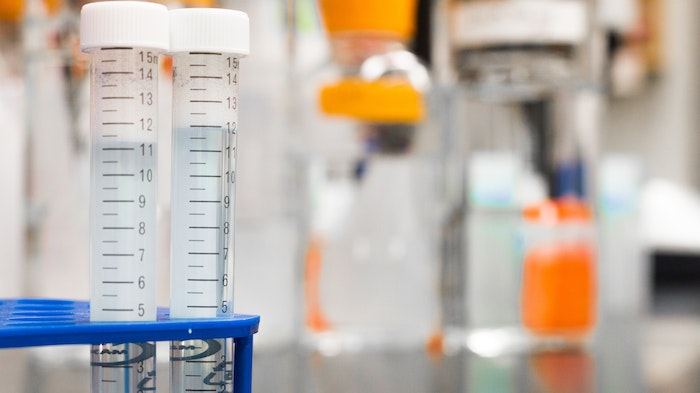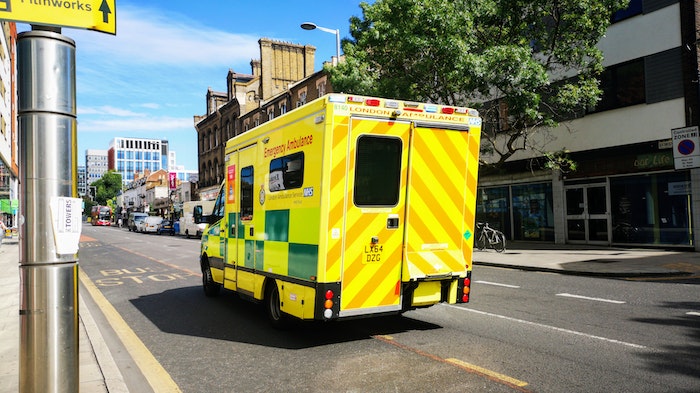Just like cocaine, crack cocaine produces a high degree of stimulation in the central nervous system (CNS) of the user as its properties act to increase the levels of biogenic amines in the CNS.
Since the introduction of DSM5 in 2013 crack cocaine just like cocaine now falls into the mental health category of Stimulant Use Disorder. (4)

Crack cocaine is formed when the standard form of the drug is dissolved in water and then mixed in with baking soda and boiled, a process which separates the solids.
Once cooled it is cut up into rocks and becomes a drug that produces an even greater high than the original form of cocaine.
It has been labelled crack cocaine in response to the crackling sound generated whilst the mixture is being boiled. Crack cocaine is also known by many other names, including crack, candy, rocks, hard and kryptonite to name but a few. (17,18)

Because of the heating process crack cocaine has been through the chemical structure of the drug has been altered slightly compared with cocaine.
This means the properties of the drug and the effects it has on users are now more direct and will reach the brain quicker, particularly if the drug is smoked or inhaled.
This means that it generates a highly intense experience, but these high feelings of pleasure will only be experienced for 15 minutes before fading. (3,18)
In essence, crack cocaine can be described as a more concentrated form of powder Cocaine, which will lead to users experiencing intense feelings of pleasure and euphoria. (4,18)
As it is such a powerful drug it is possible for users of the drug to be hooked into the addictive cycle after consuming the drug just once. This is enough for its properties to attach to sensitive receptors in the brain’s mesolimbic dopamine system, also known as the reward centre.
This activates the brain into releasing dopamine when it is not naturally primed to do so, which begins to interfere with our mood and emotions which are now controlled by crack cocaine use rather than internal natural mechanisms.

Because it is now a significantly more potent drug in its new form there is now a greater vulnerability to people overdosing when they take the drug when compared with cocaine. Anyone who is taking the drug for the first time is particularly vulnerable to overdosing. (18)
Any use of crack cocaine is seen as drug abuse as it is an illicit psychoactive drug that is highly addictive and has huge health implications.
Because crack cocaine tends to be commonly smoked by users it reaches the brain and takes effect much quicker than cocaine which is snorted by many users.
This direct route of administration means users will obtain a very intense high much more quickly, however, these highly desirable and seductive effects do not tend to last for too long. (18)
Because a person taking the drug experiences such a thrilling and exciting high the brain registers this and will seek to have this experience again.
This high acts as a positive motivation for the person to take the drug again due to their expectation of the effect the drug will have on them. (10)

According to DSM5 crack cocaine addiction falls into the diagnostic category of a stimulant use disorder, the same category as cocaine.
Mental health professionals attempting to diagnose the condition will adopt the following criteria to help them; (1)
As the positive effects of crack cocaine are highly pleasurable it has been known for people to become addicted after smoking the drug once or twice.
They will quickly build up a tolerance to the drug if they seek to experience its pleasurable effects regularly and over a period of 1-2 weeks people who take the drug will need to take a greater amount as the initial dose is now not strong enough to provide them with the initial intense high they experience because their body is now familiar with the drug.
People who take crack cocaine are more likely to become addicted than cocaine users because crack cocaine produces immediate, highly pleasurable effects which cannot be obtained via any natural sources. (3,10)

Individuals who take the drug quickly learn of the intense positive feelings they experience and will then develop a series of beliefs and expectations about the drug that becomes internalised and leads to them slowly relying on the drug to fulfil certain needs for them or provide them with important resources which help them function effectively day to day.
Eventually, they will not be able to function without taking the drug and need to take it as it has become an emotional/psychological crutch for them, and slowly the person will need to take it to relieve stress and cope with day-to-day life. (4,6)
At this stage, the person is now taking crack cocaine to get rid of the withdrawal symptoms (negative reinforcement) rather than for pleasure (positive reinforcement). (4,10)
Crack cocaine is a psychoactive drug which can dramatically affect our brain biology and internal chemistry.
When people take crack cocaine their body initiates several processes to adapt to the presence of the drug so that it has less of an effect on them and the body can process and remove traces of the drug as efficiently and as swiftly as possible.
This process is called neuroadaptation and is part of the overall mechanism known as homeostasis.
Having gotten used to the presence of the drug, it is thrown in a disruptive state again when the patient stops taking the drug and is required now to adapt to the decrease in crack cocaine’s presence in our body.
The result of this adaptation is that the body will generate withdrawal symptoms in response to the diminishing levels of the drug in the body. (6,10)
As crack cocaine falls into the stimulant drug category it fires up the central nervous system, elevating the user’s mood and providing them with pleasurable feelings.
It also provides the body with strong bursts of physical and mental energy, meaning the body is primed and ready for action and physical activity and the mental resources to study hard and obtain a high degree of focus. (3,4)
However, due to the way that psychoactive drugs interact with the human brain and body as soon as the drug effects ware off people tend to feel lethargic and tired.
This is because the withdrawal symptoms of any drug tend to have the opposite effect to the main effects of the drug.
So as cocaine is a stimulant drug the opposite effects experienced during withdrawal would include the following symptoms:
As well as the symptoms associated with crack cocaine withdrawal which can disappear within 3-7 days, regular users may find that they develop many psychological and psychiatric withdrawal symptoms that can last for weeks if not months because of the intense nature of the “high” it affords users.
This can significantly alter brain biology and chemical mechanisms associated with the central nervous system. (6,18)
These longer-term consequences include:

As crack cocaine produces more intense and powerful positive feelings when compared with the standard form of cocaine it means that the withdrawal symptoms people experience when they stop taking the drug will be far more intense as well.
The severity of the withdrawal symptoms users experience depends on many factors including:
Crack cocaine takes effect quicker than cocaine but does not last for very long so users can very easily build up a tolerance to the drug which means they will experience cravings to take the drug more often to keep experiencing its highly desirable effects. (17)
The chemicals in this newly formed Crack cocaine wreak havoc on the brain’s reward system which means that when they stop taking the drug they will experience a much lower mood than before they initially took the drug, which can lead to them experiencing many depressive symptoms and poor mental health.
This is because regular users of crack cocaine will find that their brain’s ability to naturally produce the feel-good chemical dopamine will be significantly reduced by continued use of the drug which means they are at risk of having a low mood for a very long time. (4,7)
Chemicals in crack cocaine do prevent the brain from processing dopamine efficiently and block the uptake process of this important neurotransmitter in the brain meaning the brain is no longer able to produce the same levels of dopamine that it previously did. (7,10)
These intense cravings can be eliminated by taking more crack cocaine which only serves to strengthen the addictive process, and within a matter of days, they will need to take a higher dose of the drug to experience the same intense positive feelings they experienced when they consumed the drug for the first time.
These strong cravings mean that people will find it very hard to give up the drug, as crack cocaine users will now be motivated to take the drug to avoid the unpleasant withdrawal symptoms that appear when they stop taking the drug. (17)

Addiction specialists have strongly recommended that people seeking to recover from crack cocaine addiction receive treatment on an inpatient basis in a residential rehab treatment centre. This is because of the highly addictive nature of the drug and the risk to the patient’s mental health during the withdrawal phase.
Emotional support is key to helping patients recover and patients will be able to receive this from trained, compassionate and non-judgmental staff who are highly experienced in helping patients overcome crack cocaine addiction.
This is even more important for patients who live in disorganised and unstructured environments where there are a lot of triggers present which can easily tempt them back into using crack cocaine.
Rehab centres offer patients a calm environment to recover in, with encouraging support from staff and no toxic influences present. Residential care also provides a sense of order not chaos as all the negative triggers associated with their crack cocaine use are removed.
Patients detoxing from crack cocaine do not have the advantage of using a pharmacological intervention to withdraw from the drug which patients going through detox treatment for heroin and alcohol do.
Patients will be required to go through the “cold turkey” process to help them give up the drug, however, it is important that their physical and mental health is monitored during the early part of their treatment.
Despite there being no substitute drugs to help patients detox from crack cocaine, the medical staff at rehab centres will be on hand carefully monitoring and supporting the client.
They also play a role in prescribing appropriate medication to alleviate the range of possible withdrawal symptoms patients may experience. There is medication available that can help with the following symptoms:

CBT helps substance users recognise and adjust any irrational thoughts and unhelpful behaviours that led to, and maintained their crack cocaine use. CBT is an effective therapy to help patients avoid relapse as it teaches them cognitive techniques to help them improve their ability to self-regulate in stressful situations.
This may involve reflecting on their behaviours in given situations and identifying which high situations cause them the most psychological distress and lead to them using cocaine.
By developing new, productive thought processes clients will be able to cope with cravings and high-risk situations rather than relapse back into taking crack cocaine. (8)
DBT also teaches clients important skills for dealing with strong feelings that usually overwhelm them.
Experiencing strong feelings is a high-risk factor for many substance users as this tends to trigger their drug use, but DBT therapists tend to work with clients to teach them vital coping skills to tolerate strong emotions in the here and now of the therapy session.
Over a period of 8-10 sessions, clients will have practised important skills that they can use in real-life situations when they experience strong, challenging feelings. (2)
Drug misuse practitioners who have utilised CM approaches to treat crack cocaine addiction have achieved a high degree of success in helping clients stop their use of the drug.
CM is based on the theory of operant conditioning and aims to shape the drug-taking behaviour of the patient by offering them rewards and incentives for stopping their consumption of the drug.
In essence, if clients manage to stop or reduce their crack cocaine use they will receive money or gifts as a reward for their efforts and commitment to recovery.
Any improvements can be validated with a drug test or observations of their behaviour and rewards will be offered at various stages along their treatment pathway to encourage the patient to keep focusing on their recovery plan. (10)
MI is a key therapeutic tool used by rehab practitioners to ensure patients maintain their motivation to continue with their recovery.
By building a trusting relationship with their patients MI therapists can help them overcome any psychological and emotional barriers that they may appear which can restrict their ability to fully engage with treatment. (9)
Group therapy is a form of therapy where clients regularly attend a group of 6-12 people and work through a range of issues and challenges together whilst supporting each other and learning strategies that will enhance their recovery from crack cocaine use. (19)
Attending group therapy has many advantages for attendees, including:
There are adapted forms of the AA’s 12-step programme available for people to work through which will be tailored towards the individual drug people have had problems with.
The 12 steps are a series of reflective challenges that patients in rehab are required to focus on in turn to help them process their experiences surrounding their drug use and give them the tools to help them recover and move forward. (6)
Self-help groups play a huge role in people’s recovery, particularly in the early stages when people have taken the brave step of accepting that they need help.
The main reason these groups are so valuable is that they offer people the chance to express their feelings and thoughts about their circumstances and their drug use in the presence of people who have been through similar difficulties.
So, the atmosphere at these meetings is one of support and understanding rather than judgemental and critical.
These support groups are based on the principles of mutual support and fellowship and meetings are held weekly at many locations throughout the UK.
Please contact our dedicated team at Rehab 4 Addiction for any advice and support on 0800 140 4690.
(1) Black, D., Grant, J. (2013) DSM5 Guidebook: The Essential Companion to Diagnostic and Statistical Manual of Mental Disorders, 5th Edition. APP. London.
(2) Dimeff, L., Linehan, M. (2008) Dialectical Behaviour Therapy for Substance Abusers. Addiction Science and Clinical Practice. June 2008.
(3) Falck, R, et al (2008) Among long-term crack smokers, who avoids and who succumbs to cocaine addiction? Drug and alcohol dependence. Nov 1 98 (1-2) p24-29. available@ Among long-term crack smokers, who avoids and who succumbs to cocaine addiction? – PMC (nih.gov)
(4) Ghodse, H. (2002) Drugs and Addictive behaviour: A guide to treatment Cambridge University Press.
(5) Greater Manchester Mental Health NHS Foundation Trust (2022) Focus on. Stimulant use. available@ Focus on… Stimulant Misuse | Greater Manchester Mental Health NHS FT (gmmh.nhs.uk)
(6) Herie, A. & Skinner, W. (ed) (2014) Fundamentals of Addiction: A Practical Guide for Counsellors. CAMH. Canada.
(7) Kahan, M. (2014) Physical Effects of Alcohol and Other Drugs. In Herie, M. & Skinner, W. (ed) Fundamentals of Addiction: A Practical Guide for Counsellors. CAMH. Canada.
(8) Kennerley, H., Kirk, J., Westbrook, D. (2015) An Introduction to CBT: Skill and Applications. SAGE Publications.
(9) Miller, W., Rose, G. (2009) Towards a theory of motivational interviewing. American Psychologist. Vol 64 No 6 p527-537.
(10) Moss, A, Dyer, K (2010) The Psychology of Addictive Behaviour. Palgrave McMillan. New York.
(11) National Institute of Drug Abuse (2022) What are the short-term effects of cocaine use? availabe@What are the short-term effects of cocaine use? | National Institute on Drug Abuse (NIDA) (nih.gov)
(12) Nestler, E. (2005) The Neurobiology of cocaine addiction. available@ The Neurobiology of Cocaine Addiction – PMC (nih.gov)
(13) Petry, N. (2011) Contingency Management: What it is and why psychiatrists should want to use it The Psychiatrist. May 35 (5) p161-163.
(14) Rassool, G.H. (2011) Understanding Addictive Behaviours. Palgrave MacMillan. New York.
(15) SAMHSA Substance Abuse & Mental Health Services Administration (2022) Group Therapy in Substance use treatment
(16) Tavistock and Portman NHS (2022) Family Therapy. available@Family therapy (tavistockandportman.nhs.uk)
(17) United States Department of Justice (2022) Crack Cocaine: Fast Facts. available@Crack Cocaine Fast Facts (justice.gov)
(18) Wills, S. (2005) Drugs of Abuse. Pharmaceutical Press. London.
(19) Yalom, I.D. (1995) The Theory and Practice of Group Psychotherapy. Basic Books. New York.